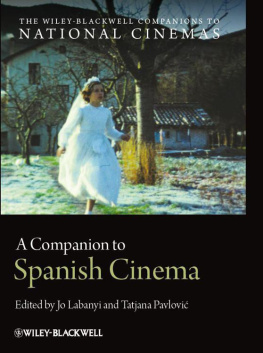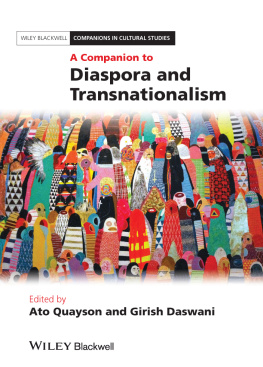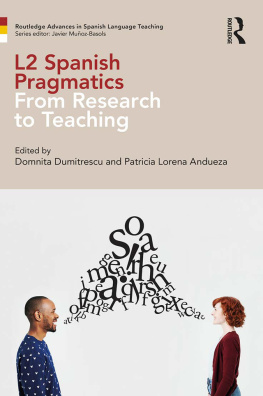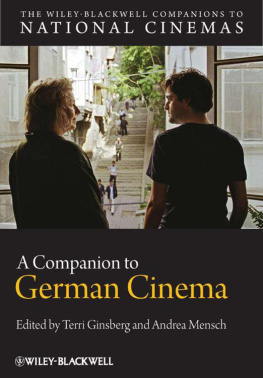Contents
Wiley-Blackwell Companions to National Cinemas
The Wiley-Blackwell Companions to National Cinemas showcase the rich film heritages of various countries across the globe. Each volume sets the agenda for what is now known as world cinema whilst challenging Hollywoods lock on the popular and scholarly imagination. Whether exploring Spanish, German or Chinese film, or the broader traditions of Eastern Europe, Scandinavia, Australia, and Latin America the 2025 newly commissioned essays comprising each volume include coverage of the dominant themes of canonical, controversial, and contemporary films; stars, directors, and writers; key influences; reception; and historiography and scholarship. Written in a sophisticated and authoritative style by leading experts they will appeal to an international audience of scholars, students, and general readers.
Published:
A Companion to German Cinema , edited by Terri Ginsberg & Andrea Mensch
A Companion to Chinese Cinema , edited by Yingjin Zhang
A Companion to East European Cinemas , edited by Anik Imre
A Companion to Spanish Cinema , edited by Jo Labanyi & Tatjana Pavlovi

This edition first published 2013
2013 Blackwell Publishing Ltd.
Blackwell Publishing was acquired by John Wiley & Sons in February 2007. Blackwells publishing program has been merged with Wileys global Scientific, Technical, and Medical business to form Wiley-Blackwell.
Registered Office
John Wiley & Sons, Ltd, The Atrium, Southern Gate, Chichester, West Sussex, PO19 8SQ, UK
Editorial Offices
350 Main Street, Malden, MA 02148-5020, USA
9600 Garsington Road, Oxford, OX4 2DQ, UK
The Atrium, Southern Gate, Chichester, West Sussex, PO19 8SQ, UK
For details of our global editorial offices, for customer services, and for information about how to apply for permission to reuse the copyright material in this book please see our website at www.wiley.com/wiley-blackwell .
The right of Jo Labanyi and Tatjana Pavlovi to be identified as the authors of the editorial material in this work has been asserted in accordance with the UK Copyright, Designs and Patents Act 1988.
All rights reserved. No part of this publication may be reproduced, stored in a retrieval system, or transmitted, in any form or by any means, electronic, mechanical, photocopying, recording or otherwise, except as permitted by the UK Copyright, Designs and Patents Act 1988, without the prior permission of the publisher.
Wiley also publishes its books in a variety of electronic formats. Some content that appears in print may not be available in electronic books.
Designations used by companies to distinguish their products are often claimed as trademarks. All brand names and product names used in this book are trade names, service marks, trademarks or registered trademarks of their respective owners. The publisher is not associated with any product or vendor mentioned in this book. This publication is designed to provide accurate and authoritative information in regard to the subject matter covered. It is sold on the understanding that the publisher is not engaged in rendering professional services. If professional advice or other expert assistance is required, the services of a competent professional should be sought.
Library of Congress Cataloging-in-Publication Data
A companion to Spanish cinema / edited by Jo Labanyi and Tatjana Pavlovi . 1
p. cm. (Wiley-Blackwell companions to national cinemas)
Includes bibliographical references and index.
ISBN 978-1-4051-9438-9 (hardback)
1. Motion picturesSpain. I. Labanyi, Jo. II. Pavlovi , Tatjana.
PN1993.5.S7C6595 2012
791.430946dc23
2012023050
A catalogue record for this book is available from the British Library.
Cover design by Nicki Averill.
Cover image from El Sur (Vctor Erce, 1983; prod. Elas Querejeta PC). Courtesy of Video Mercury and Filmoteca Espaola.
Acknowledgments
Our special thanks to Margarita Lobo, Alicia Potes, and Miguel Soria at Filmoteca Espaola in Madrid for their help with locating and providing graphic material, and with identifying copyright holders. We also thank Elena Baranda of Video Mercury for granting permission to reproduce a significant number of images, including the still from Vctor Erices El sur used on the cover. We are also hugely grateful to Curry ODay, tech support specialist at Tulane University, for his invaluable technical help with the illustrations. We owe a particular debt to Jayne Fargnoli of Wiley-Blackwell for her faith in our ability to produce an innovative volume, and to Galen Young and Allison Kostka for their efficiency throughout the production process.
List of Figures
| Alberto Closas and Luca Bos in Muerte de un ciclista (Juan Antonio Bardem, 1955; prod. Suevia Films). Courtesy of Criterion Collection. |
| Handbill publicizing Mara Flix and Rossano Brazzi in La corona negra (Luis Saslavsky, 1950; prod. Suevia Films). Private collection. |
| Silvia Pinal in the title role of Luis Buuels scandalous transnational hit Viridiana (1961; prod. UNINCI / Alatriste). |
| Stphane Audran in Jos Luis Boraus Hay que matar a B (1973; prod. El Imn): a cross between one of Hitchcocks icy blondes and a Latin version of Rita Hayworth in Welles The Lady from Shanghai (1947). |
| Mexican heart throb Jorge Negrete surveys Seville, represented by the iconic image of the Giralda, in the first SpanishLatin American coproduction, Jalisco canta en Sevilla (Fernando de Fuentes, 1948; prod. Chamartn). |
| A first attempt to depict a broad canvas of immigration in Spain by the Egyptian-born Basel Ramsis: El otro lado: Un acercamiento a Lavapis (2003; prod. Dayra Arts S.L. / Basel Ramsis). Courtesy of Basel Ramsis. |
| The invisible echo ( El tambor del Bruch , Ignacio F. Iquino, 1948; prod. Emisora Films). |
| The visible trace in El Judas (Ignacio F. Iquino, 1952; prod. IFI). |
| Barcelona-cum-New York in Bilbao (Bigas Luna, 1978; prod. Figaro-Ona Films). |
| Spain is different but Catalonia is the same: Los Tarantos (Francisco Rovira Beleta, 1963; prod. Tecisa / Films Rovira Beleta). |
| Immigrant laborers and foreign tourists in La piel quemada (Josep Maria Forn, 1967; prod. Teide PC). |
| The new dawn of political consciousness: Aurora de esperanza (Antonio Sau Olite, 1937; prod. SIE). |
| The dark face of Francoism: Vampir-Cuadecuc (Pere Portabella, 1970; prod. Films 59). |
| Pantalla Propia: O Cine das Nacins ( A Screen of Ones Own: The Cinema of Nations ). Special issue of the cultural magazine Cadernos da Nosa Terra de Pensamento e Cultura on the cinema of Spains autonomous communities (November 1990). Courtesy of Cadernos da Nosa Terra . |
| Habana Blues trio ( Habana Blues , Benito Zambrano, 2005; prod. Maestranza Films). Courtesy of Maestranza Films. |
| Poster for Kutsidazu bidea, Ixabel (Fernando Bernus and Mireia Gabilondo, 2006; prod. Tentazioa Produkzioak). Courtesy of Tentazioa Produkzioak. |
| Poster for Xavier Villaverdes Continental (1989; prod. Continental Producciones). Courtesy of Continental Producciones. |
| Poster for Miguelanxo Prados De profundis (2006; prod. Continental Producciones). Courtesy of Continental Producciones. |
| The leg fetishism in Buuels Ensayo de un crimen (1955) would inspire Almodvars Carne trmula (1997; prod. El Deseo), as illustrated in this shot. |
| The Buuelian specular ritual aligns the gaze of characters on screen with the extradiegetic gaze of the camera and spectators: Belle de jour (Buuel, 1967; prod. Robert and Raymond Hakim / Paris Film Production). |
Next page







